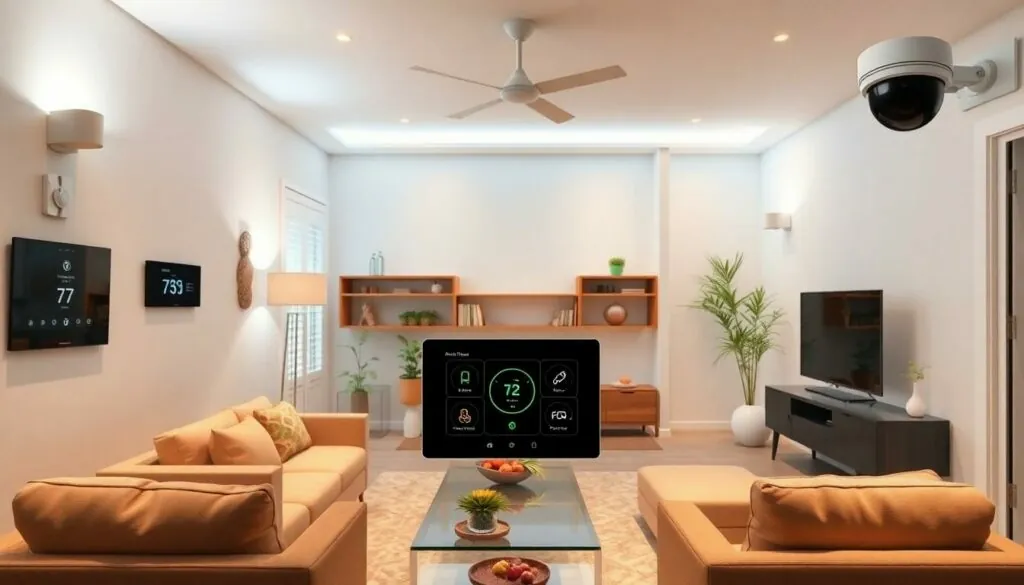Table of Contents
ToggleIn a world where smart homes are as common as avocado toast, understanding the wireless networking protocols that power these gadgets is crucial. But wait—what if someone told you there’s a protocol out there that doesn’t even use TCP/IP? That’s right! While most smart devices rely on this ubiquitous framework, some protocols take a different route, leaving tech enthusiasts scratching their heads in curiosity.
Imagine a protocol that dances to its own beat, connecting your devices without the heavy lifting of TCP/IP. It’s like finding out your favorite coffee shop serves tea on the side—unexpected but refreshing! As we dive into the quirky world of smart home networking, get ready to discover the unsung hero of wireless communication that’s breaking the mold and making your smart home even smarter.
Overview of Smart Home Networking Protocols
Smart home networking protocols play a crucial role in ensuring seamless communication between devices. These protocols dictate how devices connect and interact within a smart home environment.
Importance of Wireless Networking in Smart Homes
Wireless networking provides flexibility and convenience for smart home systems. It allows devices to communicate without physical connections, simplifying setup and installation. Each device’s ability to connect efficiently enhances overall functionality, enabling users to control lighting, heating, and security from mobile devices. Users experience improved reliability with wireless protocols, as they streamline data transmission, reducing delays in response time. This responsiveness is vital when devices rely on real-time information to optimize home settings.
Key Considerations for Choosing a Protocol
Selecting the right networking protocol depends on various factors. Device compatibility is essential; ensuring all devices can communicate within the chosen protocol reduces integration issues. Security stands out as a top priority; protocols that provide robust encryption safeguard user data and privacy. Range also influences decisions; some protocols perform better over longer distances than others. Power consumption is another consideration, especially for battery-operated devices, as energy-efficient protocols extend device lifespans. Finally, scalability ensures that users can integrate additional devices without compromising system performance.
Popular Smart Home Wireless Protocols

Smart home wireless protocols enable effective connectivity between devices. Understanding their unique features aids in selecting the most suitable option for a smart home ecosystem.
Zigbee
Zigbee operates on the IEEE 802.15.4 standard, designed for low-data-rate applications. It forms a mesh network to enhance communication range and reliability. Zigbee networks can support up to 65,000 devices, making scalability a strong advantage. Many smart home devices, such as light bulbs and sensors, utilize Zigbee due to its low power consumption. Security is robust with AES-128 encryption, ensuring safe data transmission.
Z-Wave
Z-Wave functions specifically within the sub-1 GHz frequency range, typically around 908.42 MHz in the US. This protocol excels in creating resilient mesh networks, with a range of up to 300 feet between devices. It supports around 232 devices per network, offering versatility in smart home configurations. Z-Wave’s low power profile prolongs battery life for devices such as door locks and thermostats. Enhanced security features, including AES-128 encryption, protect users from potential breaches.
Thread
Thread operates on the IEEE 802.15.4 standard, similar to Zigbee. It’s designed for low-power, low-latency communication within smart homes. Thread supports IPv6, enabling seamless integration with the internet without relying on TCP/IP. The self-healing mesh network enhances device communication and connectivity. Up to 250 devices connect in a single network, offering scalability for smart home setups. Security is paramount, with device authentication and encrypted communications ensuring safety.
TCP/IP and Its Role in Smart Home Networks
Understanding TCP/IP’s function is crucial for grasping smart home networks. TCP/IP stands for Transmission Control Protocol/Internet Protocol, serving as the foundational suite for internet communications. This set of rules enables data exchange between connected devices. Devices that adhere to TCP/IP can communicate over local and wide area networks, making it essential for many smart home devices.
What Is TCP/IP?
TCP/IP is a protocol suite that dictates how data is packaged, addressed, transmitted, and received across networks. It incorporates four layers: application, transport, internet, and network interface. Each layer addresses distinct aspects of communication. Various devices rely on TCP/IP to facilitate seamless connections and communication, thus ensuring compatibility among diverse systems.
Limitations of TCP/IP in Smart Home Solutions
TCP/IP presents limitations in specific smart home applications. High power consumption affects battery-operated devices negatively, leading to reduced efficiency. Security vulnerabilities exist, including exposure to cyber threats due to its widespread adoption. Additionally, latency issues can impact real-time communication between devices, potentially disrupting user experience. These constraints prompt the exploration of alternatives that enhance device interoperability while minimizing drawbacks.
Exploring Non-TCP/IP Protocols
Non-TCP/IP protocols present innovative solutions for smart home networking. Several notable options operate independently of the conventional TCP/IP framework, enhancing device connectivity.
Zigbee: Features and Use Cases
Zigbee utilizes the IEEE 802.15.4 standard to form a powerful mesh network. This protocol supports up to 65,000 devices, making it ideal for extensive smart home ecosystems. Low power consumption ensures long battery life for devices, reinforcing its suitability for energy-efficient applications. Zigbee’s robust security, provided through AES-128 encryption, adds an extra layer of protection. Common use cases include smart lighting systems, home automation, and environmental monitoring, where seamless communication among devices proves essential.
Z-Wave: Advantages and Applications
Z-Wave operates within the sub-1 GHz frequency range to create reliable mesh networks. A notable range of 300 feet allows devices to communicate efficiently across larger spaces. With support for approximately 232 devices, Z-Wave proves ideal for medium-sized smart homes. Low power usage contributes to its appeal, especially for battery-operated devices. Key applications include smart locks, thermostats, and security systems, where Z-Wave’s enhanced security features mitigate risks and ensure safe interactions.
Thread: Innovations and Connectivity
Thread focuses on low-power, low-latency communication within smart home environments. This protocol supports IPv6, facilitating direct internet integration for enhanced connectivity. A self-healing mesh network allows for up to 250 devices, maintaining robust inter-device communication. Strong security measures protect data exchanges, addressing concerns surrounding smart home privacy. Thread is often utilized in various applications, such as smart appliances, home security, and voice-controlled systems, driving innovation in device interoperability.
Comparison of Protocols
This section compares various smart home wireless networking protocols that operate without relying on TCP/IP. Understanding these distinctions is vital for achieving optimal functionality in smart home setups.
Performance Metrics
Performance metrics play a crucial role in assessing the effectiveness of these protocols. Zigbee supports a vast network with up to 65,000 devices, all while maintaining low power consumption. Z-Wave operates efficiently within a sub-1 GHz frequency range, achieving an effective communication distance of up to 300 feet. Thread facilitates quick communication between devices, supporting up to 250 devices in a self-healing mesh network, which ensures reliability. These metrics reveal the scalability and responsiveness needed for varied smart home applications.
Security Considerations
Security considerations sharply differentiate protocol options in smart home environments. Zigbee employs AES-128 encryption, offering robust protection against unauthorized access. Z-Wave enhances security by utilizing a unique network ID and strong encryption methods to safeguard devices. Thread provides a high level of security support through its IPv6 integration, ensuring data confidentiality. Each of these protocols addresses potential vulnerabilities, making them suitable for secure smart home communication.
Compatibility with Smart Devices
Compatibility with smart devices significantly impacts the choice of protocol. Zigbee is widely supported by numerous manufacturers, making it ideal for diverse device integrations. Z-Wave maintains compatibility with various products specifically designed for its network, but with a limited number of devices compared to Zigbee. Thread, backed by the Connectivity Standards Alliance, is gaining traction as more manufacturers adopt its standards. Ensuring that the selected protocol aligns with existing devices enhances overall smart home interoperability.
Exploring wireless networking protocols that don’t rely on TCP/IP reveals exciting possibilities for smart home systems. Zigbee, Z-Wave, and Thread each offer unique advantages that cater to different needs and preferences. Understanding these alternatives empowers users to make informed decisions when selecting the best protocol for their smart devices.
As smart homes continue to evolve, the choice of networking protocol will play a critical role in enhancing device performance and security. By considering factors such as power consumption, range, and compatibility, homeowners can optimize their smart home experience. Embracing these innovative protocols not only simplifies device connectivity but also paves the way for a more efficient and secure smart living environment.




